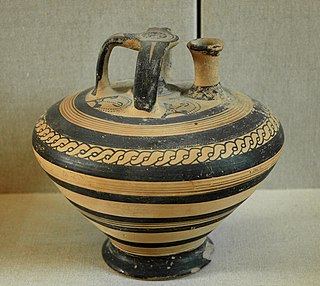
Vodice is a settlement in the Municipality of Vodice in the Upper Carniola region of Slovenia, just north of Ljubljana. In addition to the main population center of Vodice, the settlement includes the hamlets of Gornji Konec, Na Vasi, Lokarje, Jegriše, Mesto, Zaprice, and Pusence.

Lukovica pri Brezovici is a settlement southwest of Ljubljana in the Municipality of Log-Dragomer in the Inner Carniola region of Slovenia.

Breg pri Borovnici is a settlement north of Borovnica in the Inner Carniola region of Slovenia. It includes the hamlet of Trnovo to the south.

Hrastje pri Cerkljah is a small village northwest of Cerklje ob Krki in the Municipality of Brežice in eastern Slovenia. The area was traditionally part of Lower Carniola. It is now included in the Lower Sava Statistical Region.

Dolenje Gradišče pri Šentjerneju is a settlement in the Municipality of Šentjernej in southeastern Slovenia. The area was traditionally part of Lower Carniola. It is now included in the Southeast Slovenia Statistical Region.

Drama is a village in the Municipality of Šentjernej in southeastern Slovenia. The area was traditionally part of Lower Carniola. It is now included in the Southeast Slovenia Statistical Region. It includes the hamlets of Dolenja Gomila, formerly an independent settlement, to the west and Otok to the northwest.

Gorenje Gradišče pri Šentjerneju is a settlement west of Šentjernej in southeastern Slovenia. The area was traditionally part of Lower Carniola. It is now included in the Southeast Slovenia Statistical Region.

Gornji Suhor pri Metliki is a settlement in the Municipality of Metlika in the White Carniola area of southeastern Slovenia, right on the border with Croatia. The entire area is part of the traditional region of Lower Carniola and is now included in the Southeast Slovenia Statistical Region.

Grič pri Dobličah is a settlement southwest of Dobliče in the Municipality of Črnomelj in the White Carniola area of southeastern Slovenia. The area is part of the traditional region of Lower Carniola and is now included in the Southeast Slovenia Statistical Region. Hamlets of the village includes Dolnji Grič, which comprises the village core, and Gornji Grič, as well as Vidoše and Kralji. Vidoše has only a few houses along the road from Bistrica to Mavrlen. Vidoše was formerly a hamlet of Doblička Gora.

Mlaka pri Kočevski Reki is a settlement in the Municipality of Kočevje in southern Slovenia. The area is part of the traditional region of Lower Carniola and is now included in the Southeast Slovenia Statistical Region.

Podgrad is a settlement east of the capital Ljubljana in central Slovenia. It belongs to the City Municipality of Ljubljana. It lies on the right bank of the Ljubljanica River at the entrance into the Besnica Valley. The Ljubljanica in turn flows into the Sava immediately northeast of the settlement core. The railway line from Ljubljana to Zidani Most runs through the settlement. The area was part of the traditional region of Lower Carniola and is now included with the rest of the municipality in the Central Slovenia Statistical Region.

Tenetiše is a settlement on the right bank of the Sava River east of Litija in central Slovenia. Traditionally the area was part of Lower Carniola and is now included with the rest of the Municipality of Litija in the Central Sava Statistical Region.

Vodice pri Gabrovki is a settlement north of Gabrovka in the Municipality of Litija in central Slovenia. Traditionally the area was part of Lower Carniola and is now included with the rest of the municipality in the Central Sava Statistical Region. The settlement includes the hamlets of Zgornje Vodice, Spodnje Vodice, and Greben.

Gorenja Vas pri Šmarjeti is a village immediately west of Šmarjeta in the Municipality of Šmarješke Toplice in southeastern Slovenia. The area is part of the historical region of Lower Carniola. The municipality is now included in the Southeast Slovenia Statistical Region. The settlement includes the hamlets of Mevce to the northwest, Podkrajec to the north, and Dolina, Hrib, and Ravnik to the west.

Mali Cirnik pri Šentjanžu is a village in the Municipality of Šentrupert in southeastern Slovenia. It lies in the hills east of Šentrupert just off the road towards Šentjanž in the historical region of Lower Carniola. The municipality is now included in the Southeast Slovenia Statistical Region. The settlement includes the hamlets of Stražberk, Vrhe, and Selo.

Gabrje pri Stični is a settlement just north of Stična in the Municipality of Ivančna Gorica in central Slovenia. The area is part of the historical region of Lower Carniola. The municipality is now included in the Central Slovenia Statistical Region. The settlement includes the hamlets of Kurja Vas, Potok, Pungrt, and Nograd.

Polje pri Višnji Gori is a settlement southeast of Višnja Gora in the historical Lower Carniola region in central Slovenia. It belongs to the Municipality of Ivančna Gorica, which is included in the Central Slovenia Statistical Region.

Gaber pri Črmošnjicah is a small settlement in the hills west of Semič in southeastern Slovenia. The area is part of the historical region of Lower Carniola and is now included in the Southeast Slovenia Statistical Region.

Obrije is a formerly independent settlement in the northeast part of the capital Ljubljana in central Slovenia. It was part of the traditional region of Upper Carniola and is now included with the rest of the municipality in the Central Slovenia Statistical Region.

Šmartno ob Savi is a formerly independent settlement in the northeast part of the capital Ljubljana in central Slovenia. It was part of the traditional region of Upper Carniola and is now included with the rest of the municipality in the Central Slovenia Statistical Region.



















